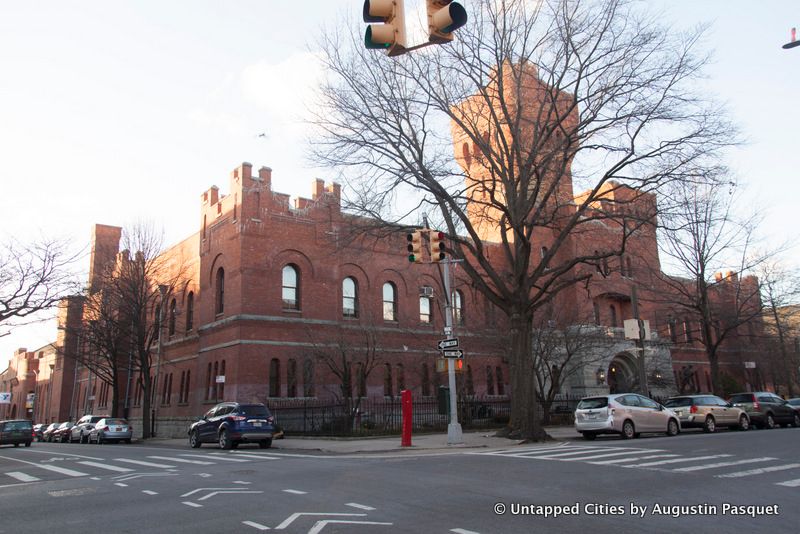The Berkshires Bowling Alley that Inspired "The Big Lebowski"
It’s been 36 years since the release of The Big Lebowski, the irreverent cult comedy by Joel and Ethan


Since outdoor dining began in phase two across the state, bars and pubs have struggled to adapt to New York’s new restrictions. In mid-July, Governor Andrew Cuomo announced that establishments could no longer offer “walk-up bar service” and could serve alcohol only if patrons were seated at a table having ordered food. The State Liquor Authority announced that “a tavern license’s minimum food requirement is soups, sandwiches, and the like,” meaning that potato chips or pretzels wouldn’t be sufficient. As part of the state’s “Three Strikes and You’re Closed” initiative, bars and restaurants get caught breaking these rules will be shut down on their third violation, leading to many annoyed bar owners and bar-goers looking for a simple beer with friends.
These increased restrictions on bars, especially after multiple complaints of lack of social distancing, are surprisingly rooted in New York’s history going back almost 200 years. New York never really fully accepted Prohibition, despite the passage of the 18th Amendment, local legislation and increased police presence. Going further back in time, Brooklyn actually had a forgotten development called “Temperanceville,” or the “South Brooklyn Temperance Village,” in the mid-1800s.
The planned community of Temperanceville began to develop around the 1830s as a residential development in what is south Park Slope today. A cadastral map of the South Brooklyn Temperance Village from the 1840s reveals area north from 15th St. to 12th St. and east from 4th Avenue to 7th Avenue with lot numbers labeled, some shaded in yellow. A Brooklyn Daily Eagle article from 1856 reporting on a fire in “Temperance Village” suggests that that the village extended even further north to at least 10th Street.

Circa 1840s Cadastral map covering area north from 15th St. to 12th St. and east from 4th Ave. to 7th Ave. (modern-day Park Slope). Shows property (including lot numbers). Oriented with north to the lower left. From collection of Brooklyn Historical Society.
According to Nalleli Guillen of the Brooklyn Historical Society, which recently published a blog post on the map of Temperanceville, “The name ‘Temperance Village’ would have attracted the attention of New Yorkers who had grown weary of the menace of urban vice and alcohol abuse, major social concerns in the 1800s. The American Temperance Society, founded in 1826, led the charge against alcoholism, warning that drinking could lead to poverty, idleness, and crime. Many middle-class Americans took up this cause, taking ‘temperance pledges’ and abstaining from drinking altogether.”
An Irish immigrant and land spectator named Robert T. Shannon advertised Temperanceville in local newspapers as an ideal home for “temperance men.” An 1849 Brooklyn Evening Star article notes how “We notice two advertisements, one of Mr. Shannon, offering lots of the usual dimensions, at Temperanceville, South Brooklyn, on reasonable terms” in response to high rents charged in New York for tenements. The article further notes that Temperanceville appealed to “a vigorous man with a large and growing family.” However, no data confirms that strict prohibition mandates were ever strictly enforced, like many other temperance villages.
Although not directly related to Temperanceville, a man named George Hall was one of Brooklyn’s leading advocates of temperance in the 1860s. According to A History of the City of Brooklyn by Henry Reed Stiles, Hall was “the first man in his city in the field of temperance. He was the first to sign in Brooklyn the Old Temperance Pledge, and the first to sign the Washington Pledge.”

The Park Slope Armory borders what was once Temperanceville on the east
However, with the rise of railroads like the Long Island Railroad, factories, and other technological develop prior to and following the Civil War, Brooklyn began to move away from this model of living towards a more sustainable urban center. As alcohol legislation became more controversial, the South Brooklyn Temperance Village began to fade as the area of Park Slope sprouted. Park Slope soon after became a major center for drinking, with many bars and pubs popping up. Prospect Park was opened in 1867 through 1873. The Park Slope Armory was built on the border of what was Temperanceville between 1891 and 1895.
Temperanceville has only a few smatterings of mentions in the Brooklyn Daily Eagle, coming up only in reference to people who were born there or lived there, or listed in even more mundane issues such as plots of land for sale. Today, little is known about this lost effort against alcohol and its sins, yet as alcohol comes under scrutiny once again, Temperanceville gives us insight into past initiatives in New York City to control its masses.
Next check out the Top 10 Secrets of the Park Slope Armory.
Subscribe to our newsletter